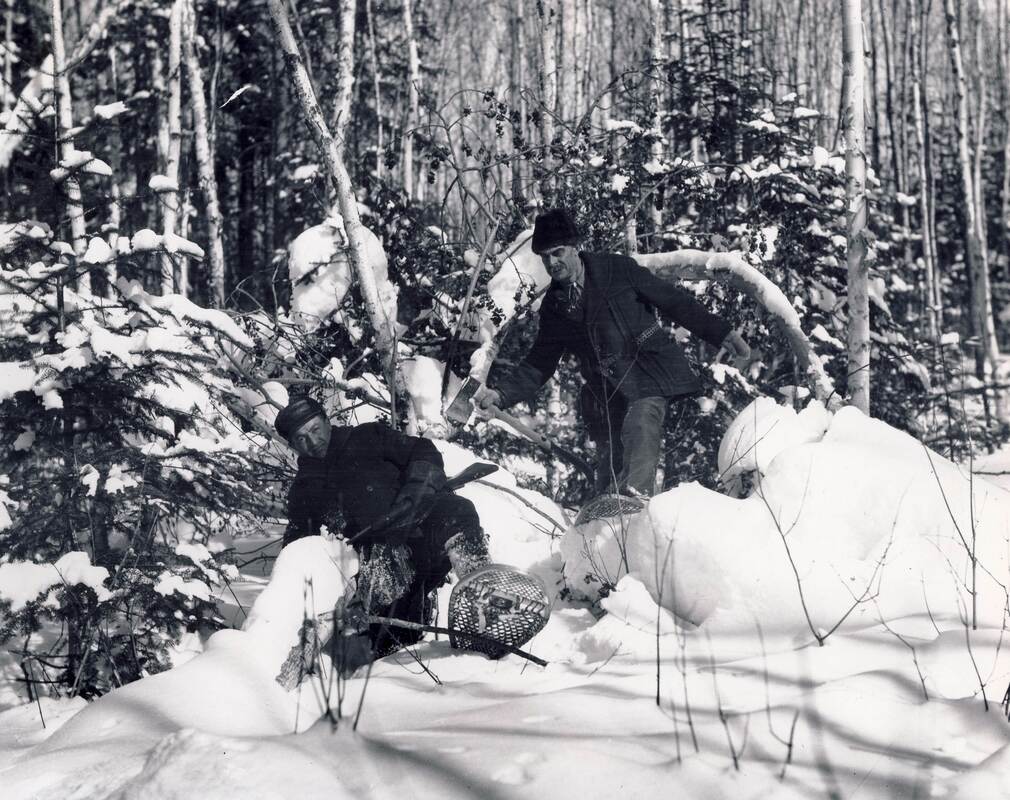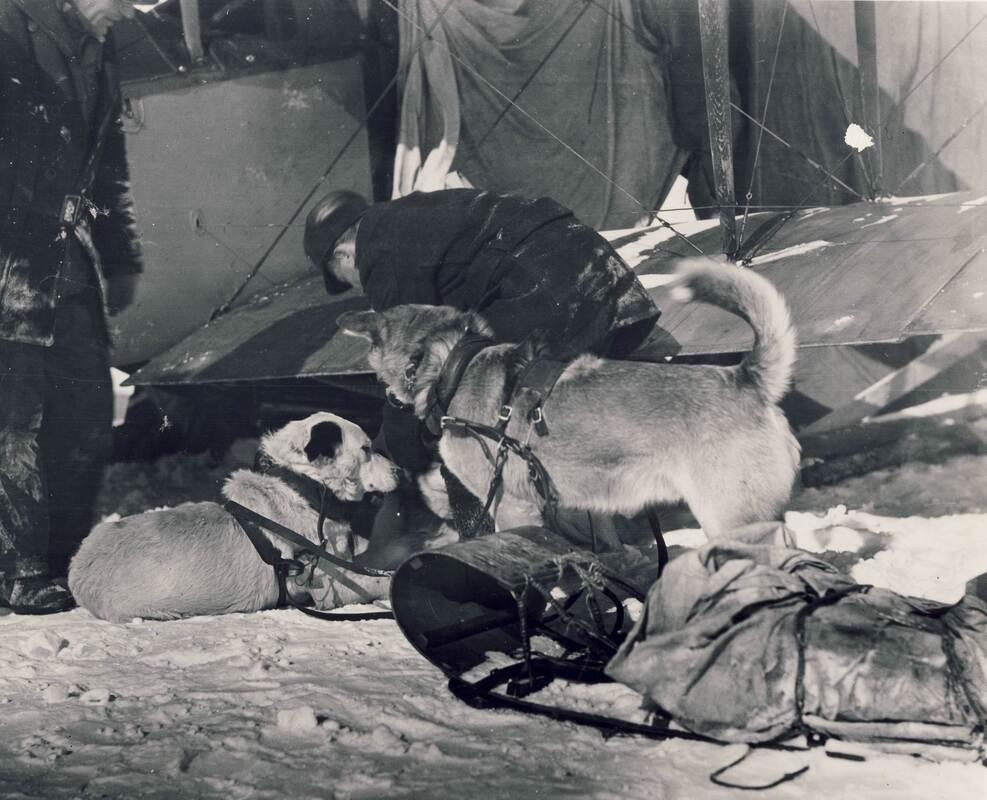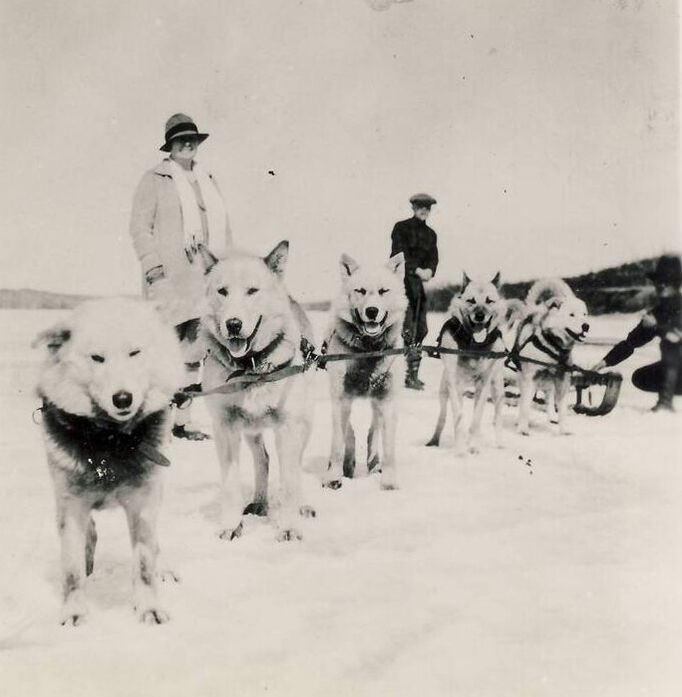Early travel
|
Travelling to Red Lake was an arduous task in the 1920s.
Before the first gold rush in 1925-1926, very few people traveled to Red Lake, so there were no formal transportation companies for passengers. Indigenous people and trappers knew the routes and used dog sleds in winter and canoes or York boats in summer. Occasionally Indigenous people would act as guides for people coming north such as government geological surveyors or early prospectors. Even though the area was very remote, fur traders and the HBC transported furs and goods to trading posts in Ear Falls and Red Lake. This meant that there were trails to Red Lake, but they were not well known and narrow. In December 1925, the Red Lake gold rush started, and several prospectors, mining engineers, surveyors and promoters came to the area. There were no roads, so they had to make their way in the best they could. In the winter, the easiest way to travel was by dog sled. As more people started using dog sleds, the cost increased, so some people used snowshoes and pulled toboggans. At one point, the trading posts could not keep snowshoes in stock as they were in such demand. A few people skied to the area, but snowshoes were more common. A few others hitched horses to sleighs. By March of 1926, flying to Red Lake became an option. The prospectors continued to arrive throughout 1926. Once the snow and ice melted, they were no longer able to use dog sleds and switched to boats and canoes. With boats and canoes, another challenge arose as the people had to cross four portages from Goldpines to Red Lake. Some people had small boats and attached motors to the boats rather than paddle. The price of flying decreased in the summer of 1926, but it was still too expensive for the average person. As more people arrived, Hudson became one of the busiest towns in northern Ontario as it was the start of the journey to Red Lake. In Hudson, there was a train station, and people came from all over North America. Some people had supplies shipped by train, while others purchased supplies in Hudson before making their way to Red Lake. It was a hard journey that could take more than two weeks, depending on the season and mode of transportation. If travelers could afford the expense, the flight to Red Lake only took an hour. Improvements to the travel routes occurred, but ultimately the original trails were utilized until 1949 when roads were built to connect the area. |
1926, Prospectors on Snowshoes
|



